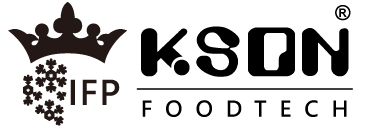King Son Convertible IFP Superchilling Thawer
Frozen Food Thawed in King Son Convertible IFP Superchilling Thawer by King Son Constancy IFP Superchilling Technology (-1.5°C/29.30°F to -2°C/28.40°F) for food process
- Ice-forming and re-crystallization can cause microstructural changes to food tissue during freezing, resulting in cell dehydration, drip loss and tissue shrinkage during thawing.
- Frozen foods must be thawed before they were processed. It would lead to microbial growth and spoilage owing to enzymes and oxidation reaction when thawing is not properly. The juice inside of the thawed food must sufficiently flowed into the cell to prevents the loss of nutritional components. Choosing the right thawing method is essential for the subsequent processing of frozen foods.
- King Son Constancy IFP Superchilling Technology is designed in temperature fluctuation ±0.3°C/5.40℉ and humidity fluctuation ±5% that precisely to perform frozen food thawing in superchilling (-1.5°C/29.30°F to -2°C/28.40°F, 85% - 95% high humidity) uniformity thawing conditions and environments, where food is in light freezing kept its best texture characteristics available for process, with lower weight/drip loss, higher yield, moisture content and lower bacterial count that ensures thawed foods in best product value.
Controlled thawing applied in clip fish and fillet production offer benefits in terms of higher yield and better quality. The product temperature should be just below the initial freezing point of the product. Normally this means that the product temperature should be approximately -1℃/30.20℉. Products containing a small amount of internal ice after thawing will give higher yields and experience lower temperatures during filleting, trimming and grading. The required energy for refreezing will therefore be reduced, thus increasing the capacity on the freezers. The reduced product temperature during processing will also reduce the risk for microbial contamination.


